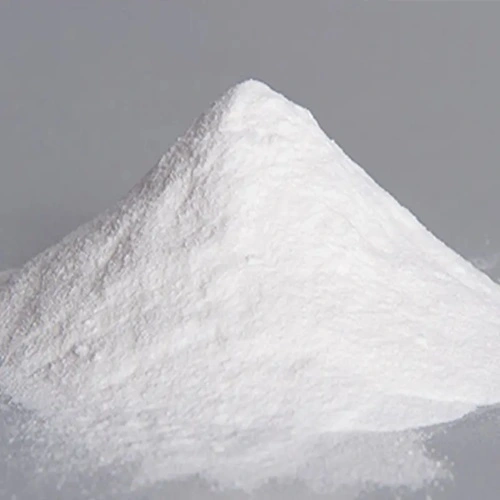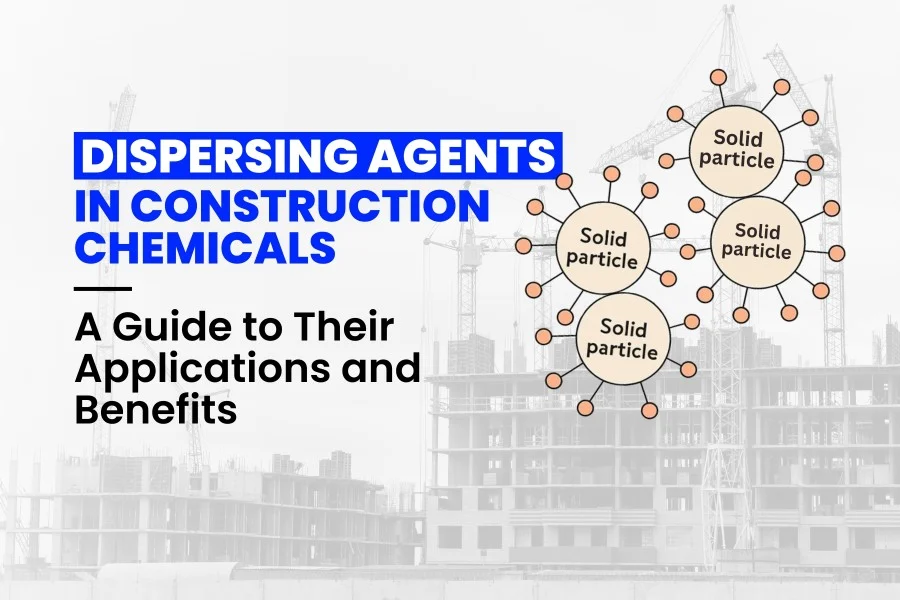In contemporary construction, long-term performance, efficacy, and accuracy are no longer aspirational targets but prerequisites. Every construction material that is found in the field is specified to display unique performance characteristics, which is where construction chemicals enter.
Construction chemicals are engineered combinations of binders, aggregates, and performance-specific additives to get the most performance out of a chemical grouping regarding workability, strength, and longevity.
Table of Contents
Dispersing agents, like electrical conduits, work silently and invisibly to ensure that the elements come together without obstruction and that the dispersion of materials provides for stability.
While construction takeaways are used every day, and rarely have I experienced clumping, inconsistent texture, or improper use, once you introduce the use of construction chemicals, then a proper working knowledge of not only enacted construction chemicals, but also the use of dispersing agents is essential too.
This guide will provide all information relevant to dispersing agents in construction chemicals, types of dispersing agents, functions of dispersing agents, application of dispersing agents, the benefits of dispersing agents, and lastly, how to choose a dispersing agent for your project.
What are Dispersing Agents?
Dispersing agents are polymers that are specific additives whose purpose is to improve the even distribution of particles in a liquid or semi-liquid medium.
Dispersing agents work to ensure pigments, minerals, and/or fillers are of good sizing and remain distributed rather than bunched together, and that performance is invariant over a product’s life cycle.

Functionally, dispersing agents are most concerned with three essential tasks:
Deflocculation – disbursement of clusters of particles (flocs) into single particles to avoid aggregation of the particles.
Stabilization – Developing a repulsive force between particles (through electrostatic or steric forces) to keep them uniformly separated over time.
Preventing Sedimentation – Reducing the tendency of heavier particles to settle towards the bottom and help maintain uniformity.
Types of Dispersing Agents
There are a variety of dispersing agents applicable for the construction industry, and usually each has a specific use:
1. Conventional Dispersing Agents
Can be either low molecular weight (which allows better penetration) or high molecular weight (which provides better stabilization).
Conventional dispersing agents are commonly utilized where moderate stability and cost are of concern.
2. Polymeric Dispersing Agents
Long-chain molecules that uniformly and effectively coat the surface of a particle, increasing the stability of the particle. Polycarboxylate Ether (PCE) is a polymer based dispersant offered in concrete admixtures that positively impacts workability without specifically adding more water.


3. Ionic and Non-Ionic Dispersing Agents
Ionic dispersants use an electrostatic charge to repel particles. Non-ionic dispersants rely on steric hindrance – the physical coating prevents particle-to-particle contact.
4. Specialized Dispersants
Naphthalene Sulfonate Formaldehyde (NSF) – a common use in concrete to improve workability without increasing water.
Melamine Formaldehyde Sulfonate (MFS) – high water reducing characteristics and fast setting applications.

Applications for Dispersing Agents in Construction Chemicals
Dispersing agents are used in numerous construction chemical items, including:
1. Paints and Coatings
- Dispersing agents maintain the uniform distribution of pigment.
- Enhance color vibrancy, hiding power, and application smoothness.
2. Concrete and Mortar
- Dispersants such as Polycarboxylate Ether (PCE), naphthalene sulfonate formaldehyde, and melamine formaldehyde sulfonate enhance strength and workability.
- Enable water reduction without a loss of flow, resulting in a denser and more durable structure.
3. Cement and Plaster
- Enhance consistency in mixing.
- Utilize dispersants to reduce clumping, applying materials more smoothly.
4. Oilfield and Mining Chemicals
- Provide stability in drilling fluids, lessen friction.
- Heat-stable performance is provided by polymers such as 2-acrylamido-2-methylpropane sulfonic acid.
5. Emulsions for Paints and Paper Coatings
Increase scrub resistance and help to reduce the amount of grit formation for a smoother finish.
Advantages of Dispersing Agents in Construction Chemicals
When you use the right dispersing agent, you can enhance the performance of your construction materials:
1. Improved Quality of Dispersion
Allow for a uniform distribution of particles, which improves aesthetics, color uniformity, and overall performance.
2. Improved Stability and Shelf Life
Reduce settling during storage and transportation.
3. Reduced Viscosity, Increased Flowability
Make the product easier to mix, pump, and apply.
Reduce load on equipment during application.
4. Greater Compatibility
Allows for a system that works well with a variety of binders and solvents, and more flexible formulation options.
5. Improved End-Product Quality
Contributes to stronger, longer-lasting, and more visually appealing construction materials.
Popular Dispersing Agents in Construction
Here’s a quick overview of some commonly used dispersants and where they excel:
| Dispersing Agent | Key Features | Common Use Cases |
| Polycarboxylate Ether (PCE) | High water reduction, improved flow | High-performance concrete, self-compacting concrete |
| Naphthalene Sulfonate Formaldehyde (NSF) | Good cost-to-performance ratio, workability improvement | Ready-mix concrete, precast elements |
| Melamine Formaldehyde Sulfonate (MFS) | High water reduction, quick setting | Precast products, high-strength applications |
Selection Criteria for Dispersing Agents
Selecting the appropriate dispersing agent is contingent upon many aspects:
System Type – Water-based and solvent-based formulations of dispersants require different dispersants.
Pigment or Filler Type – Some dispersants may be more effective for mineral and others for organic pigments.
End Use Application – Concrete admixtures, paints, or plaster each has special requirements to perform.
Compatibility – Make sure that the dispersant is compatible with binders, aggregates, and other additives.
Stabilization Method – In considering stabilization for your system, you have the choice of electrostatic and steric.
To Conclude
Dispersing agents may be hidden in the final product, but the value they bring to deliver quality, durability, and workability cannot be ignored.
If it is Polycarboxylate Ether (PCE) in high-performance concrete, Naphthalene Sulfonate Formaldehyde Mode in low-cost formulations, or Melamine Formaldehyde Sulfonate in fast-curing precast product, these agents help construction participants achieve their goals with less waste and with higher efficiency.
By now, concerning different types, functions, and selection criteria, engineers, contractors, and manufacturers should be able to make informed decisions, and their materials should perform exactly as they intended.
In essence, dispersing agents are not merely chemical additives, but are the unseen agents that enable us to deliver better, smoother, and reliable construction results.
Sandip Agrawal, Polymer Engineer and MD of Sakshi Chem Sciences Pvt. Ltd., leads innovation in construction chemicals, shuttering oils, and industrial lubricants. With expertise in polymer science and eco-friendly solutions, he drives R&D and sustainable advancements, ensuring high-performance products for India and global markets.


